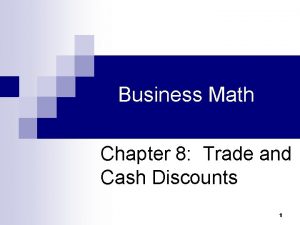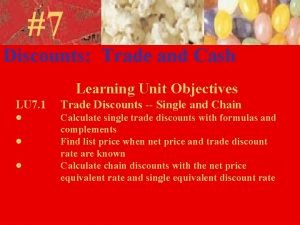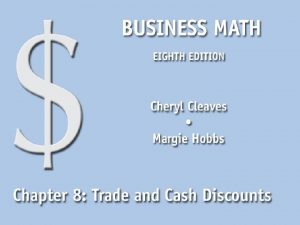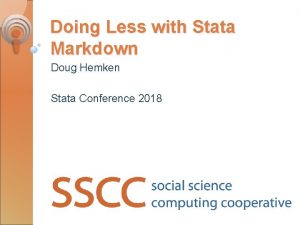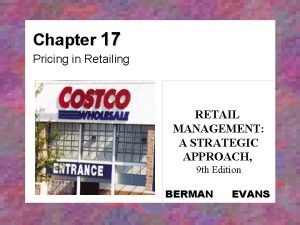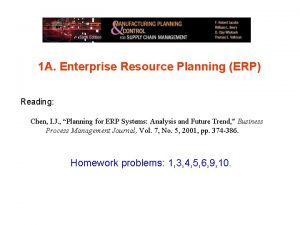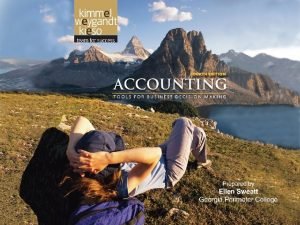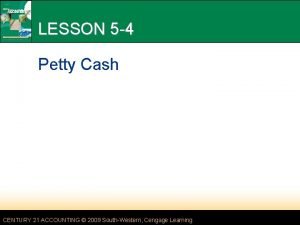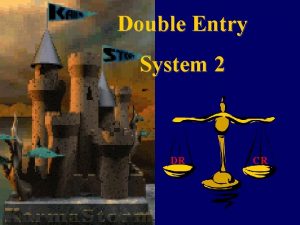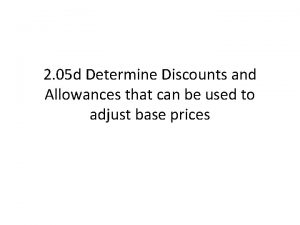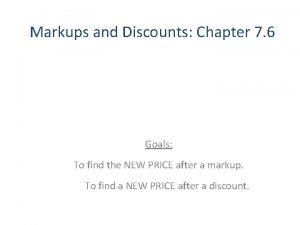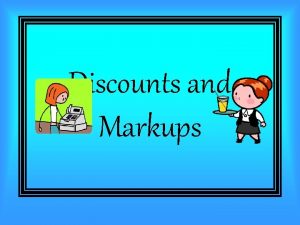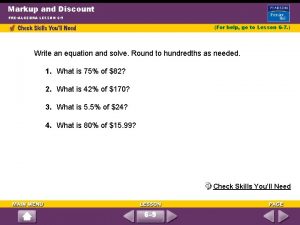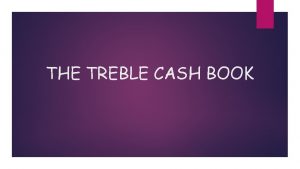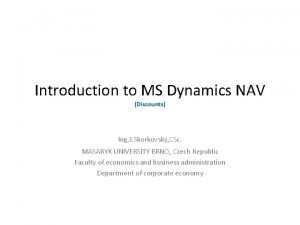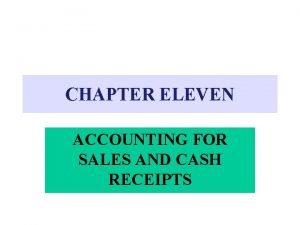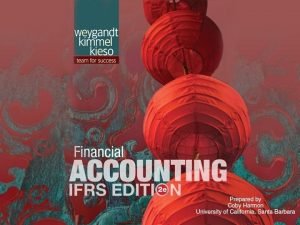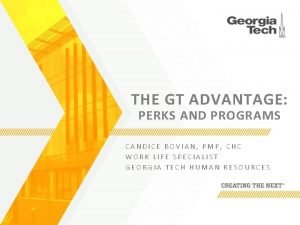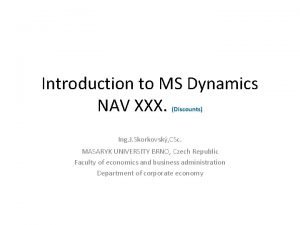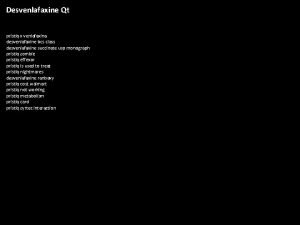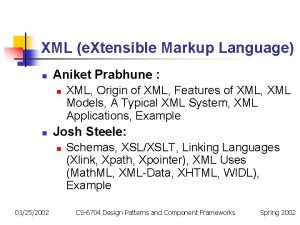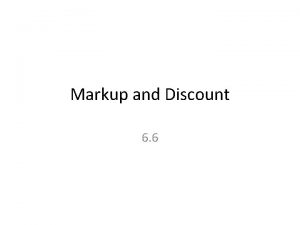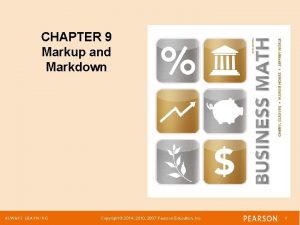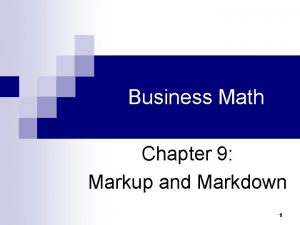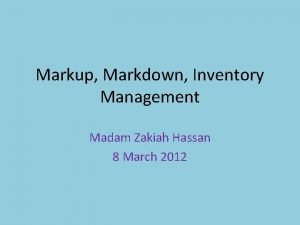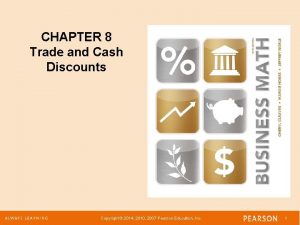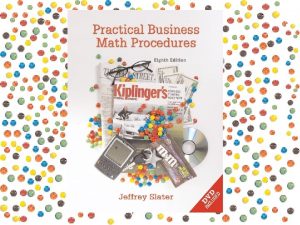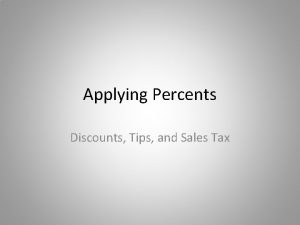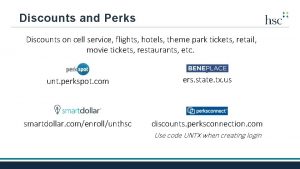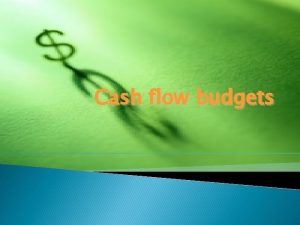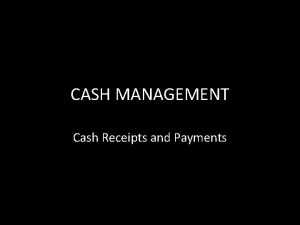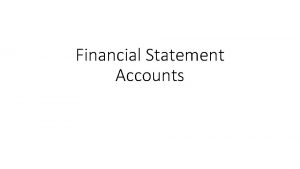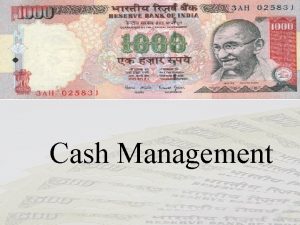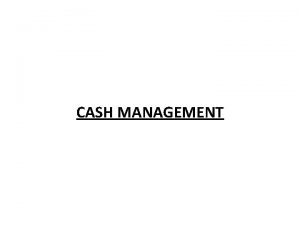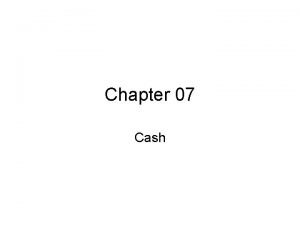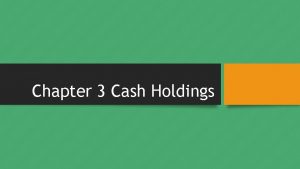Trade Discounts Cash Discounts Markup and Markdown Unit










































- Slides: 42

Trade Discounts, Cash Discounts, Markup, and Markdown Unit 4

Objectives • Solve problems involving trade discounts • Calculate equivalent single rates of discount for a discount series • Apply methods of cash discount • Solve problems involving markup based on either cost of selling price • Solve problems involving markdown • Solve integrated problems involving discounts, markup, and markdown

Supply Chain • The supply chain defines the channels or stages that a product passes through as it is converted from a raw material to a finished product purchased by the consumer


Supply Chain • In some supply chains, the distributor and wholesaler are separated • In other supply chains, the manufacturer also serves as the wholesaler • Within the supply chain, all of the channels must make a profit on the product to remain in business

Supply Chain

Selling Price • Components of the selling price Selling Price Profit Expenses (indirect) Components of Selling Price Cost (direct)

Trade Discount • A trade discount is a reduction of a list price or manufacturer’s suggested retail price (MSRP) • Usually stated as a percent of the list price or MSRP • Trade discounts are used by manufacturers, distributors, and wholesalers as pricing tools to A. determine different prices for different levels of the supply chain B. communicate changes in prices C. enable changes in prices

Trade Discount •

Trade Discount •

The Net Price Factor Approach • Formulas This is the important final formula

Discount Series • A manufacturer may offer two or more discounts to different members of the supply • Chain • If a list price is subject to two or more discounts, these discounts are called a discount series • Additional discounts offered to encourage large volume orders and early orders for seasonal items • Additional discounts may be offered to different members of the merchandising chain

Discount Series • Formulas Use if we have more than one discount rate • For every discount series, a single equivalent rate of discount exists

Questions • Golf World sells a set of golf clubs for $762. 50 below the suggested retail price. Golf World claims that this represents a 62. 5% discount. What is the suggested retail price (or list price)? • A mobile phone is listed for $174 less 162/3%, 10%, and 8% • A. What is the net price? • B. What is the total amount of discount allowed? • C. What is the exact single rate of discount that was allowed?

Questions • An office desk listed at $440 less 25% and 15% is offered at a further reduced price of $274. 89. What additional rate of discount was offered?

Payment Terms and Cash Discounts • An invoice for the goods is sent, and the seller specifies payment terms on the invoice • The business selling the goods can offer a cash discount to encourage prompt payment

Payment Terms and Cash Discounts • An invoice for the goods is sent, and the seller specifies payment terms on the invoice • The business selling the goods can offer a cash discount to encourage prompt payment

Payment Terms and Cash Discounts • All payment terms have three things in common: 1. The rate of discount is stated as a percent of the net amount of the invoice (the amount after trade discounts are deducted) 2. The discount period is stated • indicating the time period when the cash discount can be applied 3. The credit period is stated • indicating the time period when the invoice must be paid

Cash Discounts • Offered in a variety of ways: 1. Ordinary dating, whereby payment terms are based on the invoice date 2. End-of-month dating, or E. O. M. dating • shift the invoice date to the last day of the month 3. Receipt-of-goods dating, or R. O. G • used when the transportation of the goods takes a long time

A Sample Sales Invoice terms of payment

Interpretation of Payment Terms

Ordinary Dating • Commonly used payment terms are n/30 (read “two ten, net thirty”) 2/10, • if payment is made within 10 days of the date of the invoice, a discount of 2% may be deducted from the net amount of the invoice • otherwise, payment of the net amount of the invoice is due within 30 days

Ordinary Dating • Determine the payment needed to settle an invoice with a net amount of $950, dated September 22, terms 2/10, n/30, if the invoice is paid i. on October 10; ii. on October 1

Ordinary Dating • Ten days after September 22 is October 2. The discount period ends October 2 i. October 10 is beyond the last day for taking the discount, the full amount of the invoice of $950 must be paid ii. October 1 is within the discount period; the 2% discount can be taken Amount paid = Net amount − 2% of the net amount = 950. 00 − 0. 02(950. 00) = 950. 00 − 19. 00 = $931. 00

End-of-the-Month Dating • Commonly the credit period (such as n/30) is not stated • In our example, “ 2/10, n/30 E. O. M. ” would be written “ 2/10 E. O. M

End-of-the-Month Dating • An invoice for $1, 233. 95 dated July 16, terms 2/10 E. O. M. , is paid on August 10. What is the amount paid? • the invoice is to be treated as if the invoice date were July 31 • the last day for taking the discount is August 10 • We start counting from the end of the month which is July 31 in this example – Aug 1 is day 1, Aug 2 is day 2 and so on with Aug 10 being day 10. Payment on Aug 10 is discounted by 2%. • Amount paid = 1233. 95(1 -0. 02) = $1209. 27

Receipt-of-Goods Dating • Hansa Import Distributors has received an invoice of $8465. 00 dated May 10, terms 3/10, n/30 R. O. G. , for a shipment of clocks that arrived on July 15 • What is the last day for taking the cash discount and how much is to be paid if the discount is taken? • Last day for taking the discount is ten days after receipt of the shipment, that is, July 25 • Less commonly used.

Partial Payment • When a business pays part of an invoice within the discount period the purchaser is entitled to the cash discount on the partial amount paid • Very important point!

Questions • Q 1. Busby Bus Services received an invoice for $2750 dated June 22 with terms 3/15, 1/30, n/60 • a. If the invoice is paid on June 30, how much is to be paid? • b. If the invoice is paid on August 15, how much is to be paid? • Q 2. What amount will reduce the amount due on an invoice of $2750 by $740 if the terms of the invoice are 5/10, n/30 and the payment was made during the discount period? • Q 3. A payment of $650 is made within the discount period on an invoice of $2400. The terms of the invoice are 5/10, n/60. How much remains owing after the payment?

Markup Selling Price (S) Markup (M) Cost (C) therefore Profit (P) Expenses (E) Cost

Rate of Markup • Markup may be stated in one of two ways: 1. as a percent of cost; or 2. as a percent of selling price

Finding the Rate of Markup • The cost of a electronic book reader to the retailer is $50 and can be sold for $80 Markup = $80 – 50 = $30

Practice Questions • Q 1. Lodgepole pine trees were purchased for $3. 50 each less 40%, and less a further 25%. They were sold for $3. 29 • A. What is the markup as a percent of cost? • B. What is the markup as a percent of selling price? • Q 2. Ultimate Ski purchased gloves for $80. 28 per pair. The gloves are marked up 48% of the selling price. • A. For how much does Ultimate Ski sell a pair of gloves? • B. What is the rate of markup based on cost?

Markdown • Reduction in price of article sold to customer • Stated as a percent of the price to be reduced • Computed as if it were a discount Profit (P) Selling Price (S) Markup (M) Cost (C) Markdown (MD) Expenses (E) Sale (reduced price) Cost

Markdown • Sale Price = Regular Selling Price – Markdown • Since the markdown is a percent of the regular selling price

Markdown •

Markdown Practice Questions • Q 1. A seven day spa vacation in Sunnybrook was advertised at a price of $799 person based on double occupancy. If the vacation was booked two months in advance, the price would be lowered to $685 person. What rate of markdown has been offered?

Markdown Practice Questions • Q 2. Amazing Aways Company sells sightseeing tours of the Kootenay Plains Ecological Reserve for $3849 person. Overhead expenses for the company are 31% of cost and the target profit is 17% of cost • A. How much does Amazing Aways pay for the tours? • B. What is the lowest price they can offer while covering all of the costs and expenses? • C. What is the highest rate of markdown at which the company will still break even?

Unit Practice Questions • Q 1. Valemount Ski and Cycle purchases ski boots for $360 per pair less 33. 33333% and 10%. The regular rate of markup on selling price of the boots is 35%. The store’s overhead is 22% of the selling price. During a January clearance sale, the price was reduced to $270 per pair. • A. what was the rate of markdown for the sale? • B. what was the profit or loss on each pair of boots at the sale price? • C. at the sale price, what was the rate of markup on cost? • D. At the regular selling price, what was the rate of markup on selling price?

Unit Practice Questions • Q 2. Valleyview Building Supply obtains 4 ft by 8 ft sheets of wallboard from Candian Gypsum at $30 per sheet less 30% and 10%. The price is to be set to cover Valleyview’s overhead of 20% of the selling price and to provide an operating profit of 18% of the selling price. • A. What should be the retail price per sheet? • B. what is the maximum amount of markdown to break even?

Formula Summary •

Formula Summary •
 Trade discount example problems with solutions
Trade discount example problems with solutions Markup and markdown difference
Markup and markdown difference Cash discounts are not taken on freight or returned goods.
Cash discounts are not taken on freight or returned goods. Equivalent single trade discount
Equivalent single trade discount Statamarkdown
Statamarkdown A benefit of a late markdown policy is:
A benefit of a late markdown policy is: Cash-in cash-out
Cash-in cash-out Trade diversion and trade creation
Trade diversion and trade creation Trade diversion and trade creation
Trade diversion and trade creation Trade diversion and trade creation
Trade diversion and trade creation Trade diversion and trade creation
Trade diversion and trade creation Tramp shipping and liner shipping
Tramp shipping and liner shipping Cash to cash cycle time
Cash to cash cycle time Cash to cash cycle time
Cash to cash cycle time The essentials of effective budgeting do not include
The essentials of effective budgeting do not include Paid cash to establish a petty cash fund
Paid cash to establish a petty cash fund A form showing proof of a petty cash payment.
A form showing proof of a petty cash payment. Discount allowed journal entry
Discount allowed journal entry Discounts and allowances
Discounts and allowances Markup formula
Markup formula A grocery store has a 60 markup
A grocery store has a 60 markup Nstu deals and discounts
Nstu deals and discounts Price discounts and allowances
Price discounts and allowances The trade in the trade-to-gdp ratio
The trade in the trade-to-gdp ratio Fair trade not free trade
Fair trade not free trade Triangular trade
Triangular trade Practice 6-9 markup and discount
Practice 6-9 markup and discount What is mobile phone text tula
What is mobile phone text tula Treble cash book
Treble cash book Do boeing employees get flight discounts
Do boeing employees get flight discounts Ing discount
Ing discount Four column ledger example
Four column ledger example Tn wic food list 2021
Tn wic food list 2021 Statement of financial position merchandising
Statement of financial position merchandising Clemson employee perks
Clemson employee perks Account for vendor rebates
Account for vendor rebates Cdha perks
Cdha perks Team georgia discounts
Team georgia discounts Xxx discounts
Xxx discounts Desvenlafaxine coupon
Desvenlafaxine coupon Unit 10, unit 10 review tests, unit 10 general test
Unit 10, unit 10 review tests, unit 10 general test Aniket prabhune
Aniket prabhune Scalanie komórek html
Scalanie komórek html
